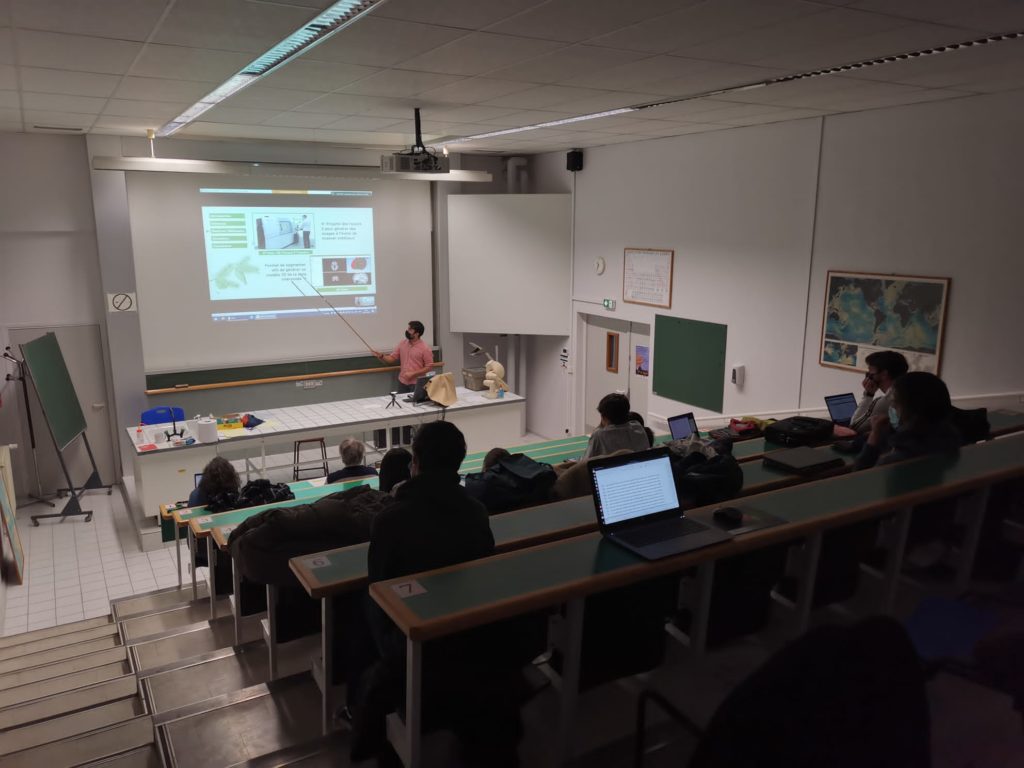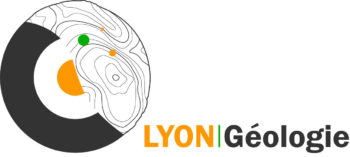Apprentissage à la recherche
Il s’agit d’un stage en laboratoire de recherche pour au moins 8 semaines qui a lieu sur la période de Mai/Juin. La mobilité internationale est fortement encouragée. Ce stage est évalué via un rapport et une soutenance orale en fin d’année.
Les étudiants effectuent un stage dans un laboratoire ou une entreprise, sous la tutelle d’un chercheur / encadrant.
La thématique de recherche et le laboratoire / l’entreprise choisis par l’étudiant seront au préalable discutés avec le responsable du parcours, afin de garantir à l’étudiant les meilleures conditions pour son initiation à la recherche, en adéquation avec son projet professionnel.
Compétences acquises :
- Initiation aux démarches de recherche
- Rédaction d’un mémoire format article de recherche
- Présentation orale de son travail de recherche
Modalités d’évaluation :
Rapport écrit évalué par un rapporteur spécialiste de la discipline (50% de la note) et soutenance orale (50% de la note).

Exemples de stages de la promo 2019 (pre-pandémie…) :
| Sedimentary fill of the Voring Basin (Central Norwegian Sea): An example of passive margin evolution | LGL-TPE, Lyon, France |
| Analyse géochimiques de dents de requins et écologie du requin | LGL-TPE, Lyon, France |
| Elements mobility in the crust: REE micro-mapping of garnet and metasomatism macro-mapping in the field | Universität Bern – Institut für Geologie, Suisse |
| Density and structure of silicate liquids under deep mantle condition | Advanced Photon Source / Chicago:USA |
| Improving the current observation of ice shelf height from swath processing of CryoSat data and to generate maps of surface elevation change. | UNIVERSITY OF EDINBURGH, UK |
| Study of the metamorphism in Barberton | Stellenbosch University, Afrique du Sud |
| Marqueurs palynologiques du pastoralisme à l’Holocène dans le massif du Tien Shan (lac Son Kul, Asie centrale) | LGL-TPE, Lyon, France |
| Carbon-cycling in lakes: From local to global processes. | McGill University, Canada |
| Ecophysiological study of Early Cretaceous Angiosperms (Crato) | Museum für Naturkunde, Berlin, Germany |
| Renforcement de la protection des puits municipaux face aux pollutions par les pesticides | Université du Québec à Montréal (UQAM), Canada |
| Etude des phénomènes non linéaires lors de l’ébranlement d’une structure | ISTerre, Grenoble, France |
| Monitoring of Earth surface changes with optical remote sensing | CALTECH, USA |
| Development of an analysis technique of the strontium isotopic ratio 88Sr/86Sr Isotopic (Ca,Fe,Sr) and elementary analysis on bones from a population of baboons | University of the Witwatersrand, Afrique du Sud |
| new idea of looking for subfossil remains (insect remains and pollen) from lake sediments | Department of Geosciences and Geography, University of Helsinki, Finlande |
| Failles actives, sismicité historique et archéosismicité au Pérou | IRD, France |
| The preservation of DNA within different minerals for a paleo-environmental genetics approach | Centre for Microbiology and Environmental Systems Science, Austria |
| Global group wave Tomography | LGL-TPE, Lyon, France |
| Use of coccoliths to constrain paleoclimates parameters | UPPSALA UNIVERSITET, Suede |
| Silicon isotope composition of the diatoms in Ryder Bay | UNIVERSITY OF EDINBURGH, UK |
| Non-local control of the nebulosity of the boundary layer. | University of Auckland, New Zeland |
| Stage de découverte du métier d’ingénieur en entreprise | BUREAU D’ETUDE MATTE |
| Étude des propriétés hydrogéotechniques de résidus filtrés compactés | Polytechnique Montréal, Canada |
| Etude microtomographique d’arthropodes du Lagerstätte de Montceau-les-Mine | LGL-TPE, Lyon, France |
| Développement et application de marqueurs moléculaires de salinité | LGL-TPE, Lyon, France |
| La dynamique d’érosion en Antarctique, apport d’une démarche couplée en thermochronologie et en isotopes cosmogéniques | ISTerre, Grenoble, France |


